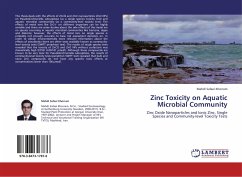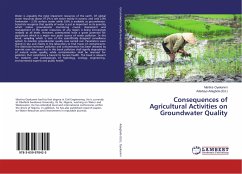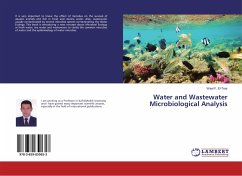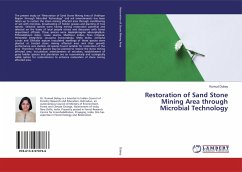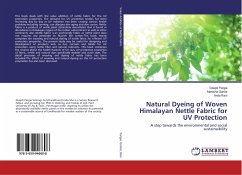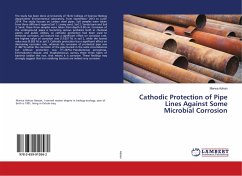
Cathodic Protection of Pipe Lines Against Some Microbial Corrosion
Versandkostenfrei!
Versandfertig in 6-10 Tagen
33,99 €
inkl. MwSt.

PAYBACK Punkte
17 °P sammeln!
The study has been done at University of Tikrit/ College of Science/ Biology department/ Environmental Laboratory, from September/ 2013 to June/ 2014. The study focuses on carbon steel pipes. Soil samples were taken from three different regions:Soil 1: Loamy sand, Soil 2: Sandy loam and Soil 3: Sand, these three samples were taken from depth 0-50 cm. Corrosion of the underground pipes is becoming serious problems both in chemical plants and public utilities, so cathodic protection had been used to eliminate corrosion, soil texture has a significant effect on corrosion rate, the highest value o...
The study has been done at University of Tikrit/ College of Science/ Biology department/ Environmental Laboratory, from September/ 2013 to June/ 2014. The study focuses on carbon steel pipes. Soil samples were taken from three different regions:Soil 1: Loamy sand, Soil 2: Sandy loam and Soil 3: Sand, these three samples were taken from depth 0-50 cm. Corrosion of the underground pipes is becoming serious problems both in chemical plants and public utilities, so cathodic protection had been used to eliminate corrosion, soil texture has a significant effect on corrosion rate, the highest value of corrosion was (13.637 %) in soil 2, while the lowest value was (9.383 %) in soil 3. Cathodic protection has a significant effect on decreasing corrosion rate, whereas the corrosion of protected pipe was (1.462 %) while the corrosion of the pipe buried in the same circumstances but without protection was (11.267%). Pseudomonas aeruginosa, Enterobacter cloacae and Staphylococcus aureus, these three types of bacteria oxidize the iron, that means it is corrosive. These findings may strongly suggest that iron oxidizing bacteria are indeed very corrosive.



